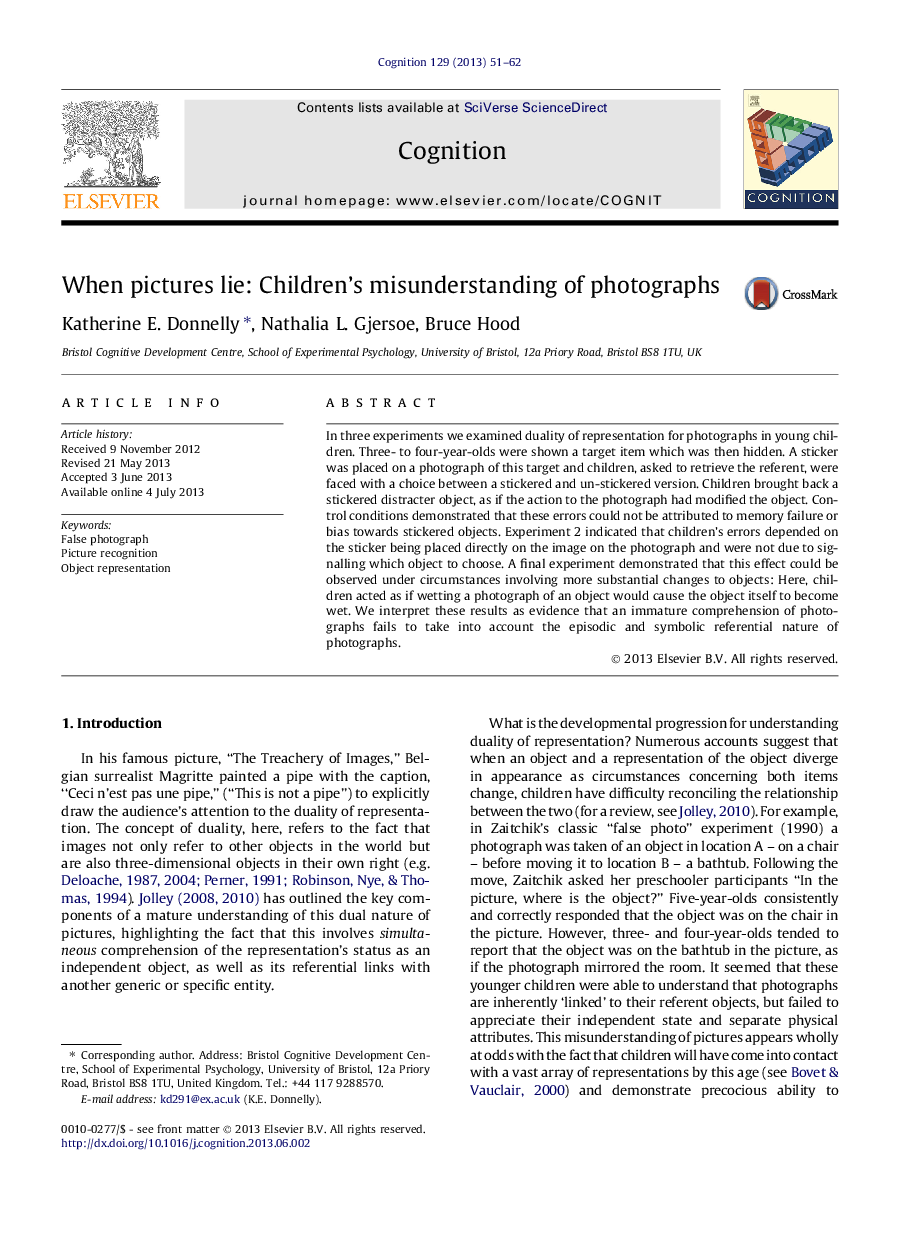| Article ID | Journal | Published Year | Pages | File Type |
|---|---|---|---|---|
| 10457689 | Cognition | 2013 | 12 Pages |
Abstract
In three experiments we examined duality of representation for photographs in young children. Three- to four-year-olds were shown a target item which was then hidden. A sticker was placed on a photograph of this target and children, asked to retrieve the referent, were faced with a choice between a stickered and un-stickered version. Children brought back a stickered distracter object, as if the action to the photograph had modified the object. Control conditions demonstrated that these errors could not be attributed to memory failure or bias towards stickered objects. Experiment 2 indicated that children's errors depended on the sticker being placed directly on the image on the photograph and were not due to signalling which object to choose. A final experiment demonstrated that this effect could be observed under circumstances involving more substantial changes to objects: Here, children acted as if wetting a photograph of an object would cause the object itself to become wet. We interpret these results as evidence that an immature comprehension of photographs fails to take into account the episodic and symbolic referential nature of photographs.
Related Topics
Life Sciences
Neuroscience
Cognitive Neuroscience
Authors
Katherine E. Donnelly, Nathalia L. Gjersoe, Bruce Hood,
